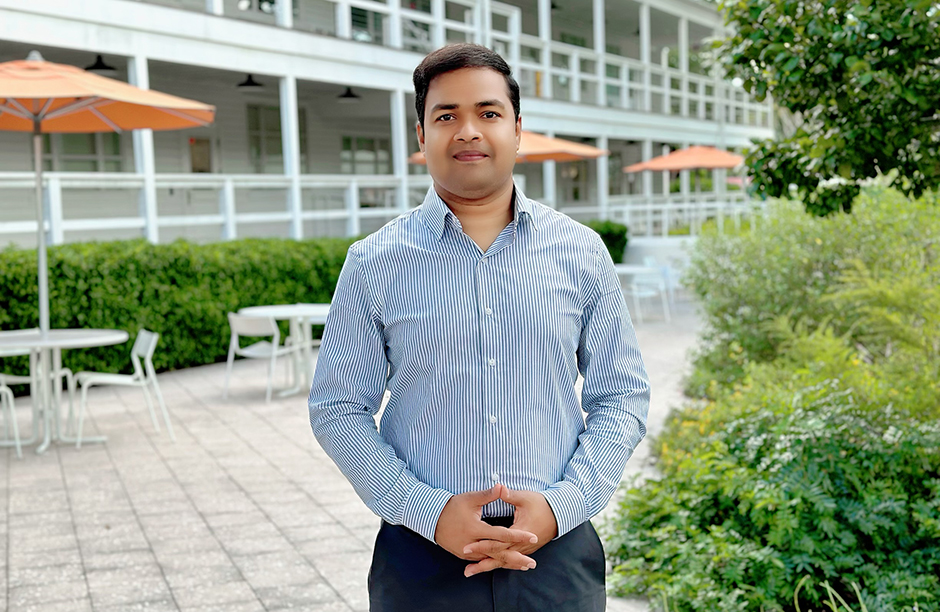Assistant Professor Sarbeswar Praharaj is one of the many new faculty members joining the College of Arts & Sciences this academic year. As an urban planner, Praharaj will have shared responsibilities in the Department of Geography & Sustainable Development and the School of Architecture. Praharaj earned his Ph.D. in sustainable urban development from the University of New South Wales, Australia, and is widely published on what it takes to design sustainable and climate-resistant cities.
A&S News connected with Praharaj to learn more about his research and his plans for the academic year.
A&S News: How would you describe your primary research interests?
Praharaj: My research combines critical applications of geographic data science for shaping smart cities and environments that foster more sustainable, inclusive, and healthy communities. My goal is to advance data analytics and science-based approaches and methods to inform climate-adaptative urban planning practices and policies.
A&S News: Your graduate degrees are in urban planning and geography. Can you tell us how you chose those fields of study and what you hope to contribute to them?
Praharaj: Geography is a unique scientific discipline that helps us understand the physical and human dynamics on earth. Since childhood, I have been curious to learn why there is a diversity of physical features on the earth’s surface and what forces act behind the changes in weather and climate patterns that we all experience.
A B.S. in geography helped me explore these questions. Pursuing a master’s in geography offered a platform for studying human-environmental interaction. It provided the ability to appreciate and analyze how human activities are altering environments and, opposingly, the impact of changes on the environment, human beings, and other species.
Lastly, I pursued a second graduate degree in urban planning to learn how to apply the theoretical principles and geographic information analysis tools to practice solving real challenges in cities. Drawing on my combined experiences in the fields of geography and urban planning, I hope to contribute towards interdisciplinary education and research discoveries to offer new models for the “cities of the future.”
A&S News: You have worked and studied in many places such as India, Australia, and elsewhere in the U.S. What makes the University of Miami the right move for you at this point in your career?
Praharaj: Miami and the broader South Florida region have pristine geography, rich ecology, and diverse human culture, offering a dream setting for somebody like me with a passion for studying and learning geography and people.
Miami is also a living laboratory when it comes to urban planning. Coral Gables, for example, was one of the first global experiments as a planned community based on the popular 20th-century “City Beautiful Movement.” I am excited to be at the crossroads of history with the opportunity to research and meaningfully contribute to enhancing these landscapes and local communities that hold lessons for regions worldwide. The University’s bold new mission of advancing interdisciplinary, problem-driven research and education through the Climate Resilience Academy influenced me to move here.
A&S News: What is one thing about Miami's urban planning that you would like to call to students' attention?
Praharaj: Sea level rise and natural hazards put Miami’s community and infrastructure at severe risk now—and more so in the future. I would encourage students to think innovatively about how urban planning can turn threats into opportunities in a city defined by water. Miami’s urban planning framework rests on various threads, ranging from land use and housing strategy, transportation planning, environmental conservation, data-driven urban modeling and emergency response, and participatory citizen engagement in community development.
Students and future leaders need to examine how resilience and adaptation can be embedded within and across these urban planning specialties to find answers to the complex challenges facing Miami.
A&S News: Are you working on any projects now?
Praharaj: I am currently developing a framework for assessing community resilience in South Florida coastal communities. This work will measure the social vulnerability and adaptive capacity of individuals and households within our communities to absorb the threats of disasters. Local planners, policymakers, and community stakeholders can use the data and analytics tool to help assess the exposure of communities and plan mitigation and recovery strategies.

